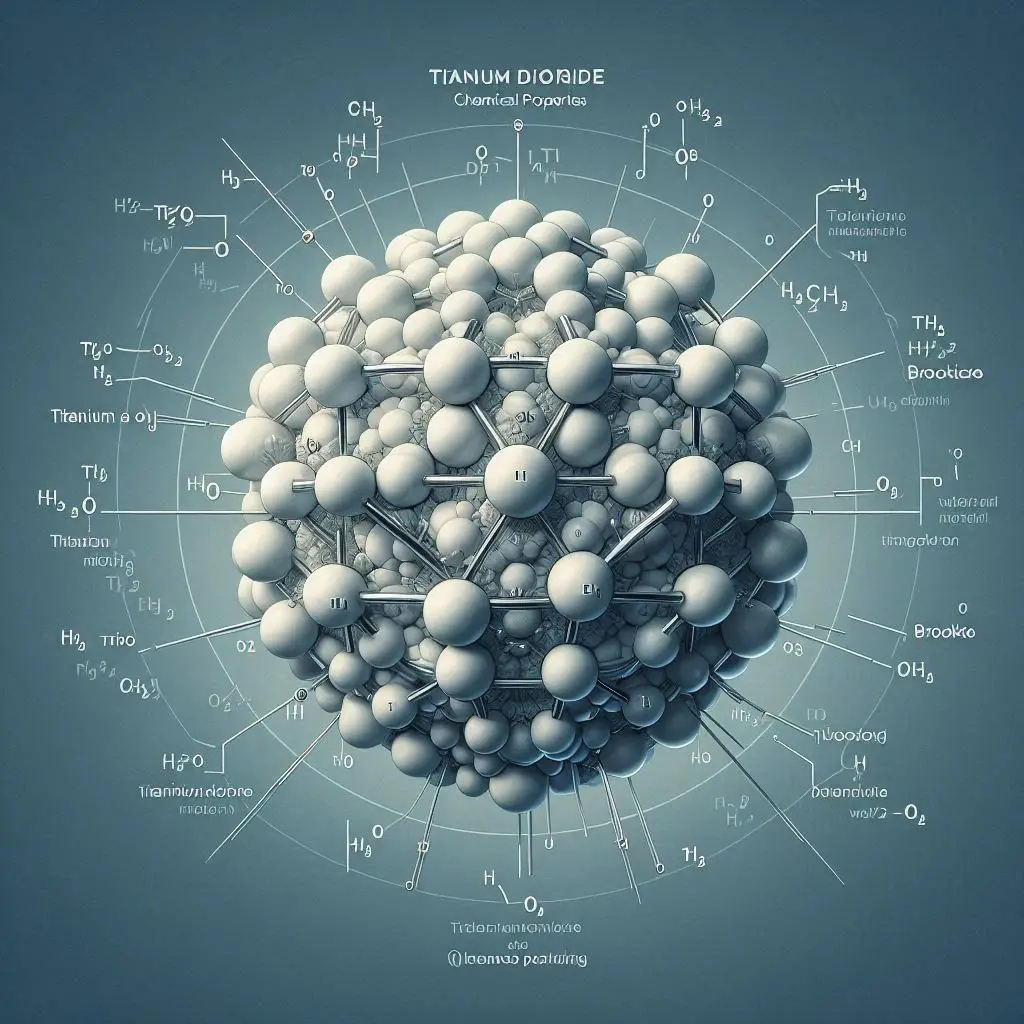
Titanium Dioxide (TiO2): Chemical Name and Uses
This article will discuss the Titanium Dioxide (TiO2) Chemical Name and Uses.
Chemical Name: With the chemical formula TiO₂, titanium dioxide—also referred to as titanium(IV) oxide or titania—is a naturally occurring oxide of titanium.
Structure and Properties: Titanium dioxide exists in nature as the minerals rutile, anatase, and brookite. It is a white, water-insoluble solid that has several key properties: high refractive index, strong UV light absorbing capabilities, and resistance to chemical and environmental degradation. These properties make TiO₂ an extremely versatile compound.
Uses of Titanium Dioxide
1. Pigments: Because of its brightness and very high refractive index (n=2.7), titanium dioxide is the most extensively used white pigment in the world. This implies that when used in paints, coatings, plastics, papers, inks, foods, medications, and the majority of toothpastes, it offers outstanding coverage and opacity. Rutile and anatase are the two main types of TiO₂ that are used in pigments.
2. Paints and Coatings: In the paints and coatings industry, TiO₂ is used to provide whiteness and opacity. Its high refractive index and light-scattering properties make it ideal for paint formulations that require bright, long-lasting colors. It also helps protect surfaces from UV degradation.
3. Plastics and Rubber: Titanium dioxide is used in the plastics and rubber industries to enhance the opacity and color of products. It also improves the material’s resistance to UV light, preventing degradation and yellowing over time.
4. Sunscreens and Cosmetics: Due to its excellent UV light-absorbing capabilities, TiO₂ is a key ingredient in sunscreens, providing protection against UVA and UVB rays. Its safety and efficacy in this role have been well documented. Additionally, it is used in cosmetics to provide whitening and brightening effects.
5. Food Additive: Titanium dioxide is used as a food colorant, known as E171 in the European Union, to make products like dairy, candy, and bakery items appear whiter and more visually appealing. Its use in food is strictly regulated due to potential health concerns, and recent studies have prompted some reevaluations of its safety.
6. Photocatalysis: TiO₂ is employed in photocatalytic applications due to its ability to act as a catalyst in the presence of UV light. This property is harnessed in applications like self-cleaning surfaces, air and water purification systems, and antimicrobial coatings. When exposed to UV light, TiO₂ can generate reactive oxygen species, which break down organic pollutants and kill bacteria.
7. Medical and Pharmaceutical Applications: In the medical field, TiO₂ is used in the formulation of pills and tablets to provide a uniform color and to protect the active ingredients from UV light. Additionally, its biocompatibility makes it useful in certain implants and medical devices.
8. Paper Industry: In paper manufacturing, TiO₂ is used as a filler to improve the brightness, opacity, and whiteness of the paper. This makes it particularly valuable for high-quality printing papers and specialty papers.
9. Environmental Applications: The photocatalytic properties of TiO₂ are exploited in environmental applications to degrade pollutants in air and water. It is used in coatings for building materials to reduce air pollution by breaking down nitrogen oxides and volatile organic compounds.
10. Ceramics: In the ceramics industry, TiO₂ is used to produce glazes and enamels. It helps improve the optical properties of ceramics, giving them a glossy finish and enhancing their durability.
11. Textile Industry: Titanium dioxide is used in the textile industry to impart whiteness and brightness to fabrics. It is also used in fibers to improve their durability and resistance to UV light.
Conclusion
Titanium dioxide (TiO₂) is a compound of immense industrial significance due to its unique properties, including its high refractive index, opacity, and ability to absorb UV light. Its primary use as a white pigment spans across various industries, from paints and coatings to plastics, papers, and cosmetics. Additionally, TiO₂’s photocatalytic properties make it valuable in environmental applications, such as air and water purification. In the medical field, its biocompatibility and protective properties ensure its inclusion in pharmaceuticals and implants. Despite its widespread use and benefits, the safety and environmental impact of titanium dioxide, particularly as a food additive, continue to be areas of active research and regulatory review.
The versatility of titanium dioxide underpins its ubiquitous presence in modern industry, reflecting its essential role in improving product performance, enhancing visual appeal, and contributing to environmental sustainability. However, ongoing research into its health and environmental impacts ensures that its applications are continually optimized for safety and efficacy. The future of TiO₂ may see advancements in its applications, driven by innovations in nanotechnology and materials science, further solidifying its status as an indispensable material in various high-tech and industrial domains. As research progresses, it will be crucial to balance the benefits of TiO₂ with careful consideration of its long-term effects on health and the environment, ensuring sustainable and safe utilization.

